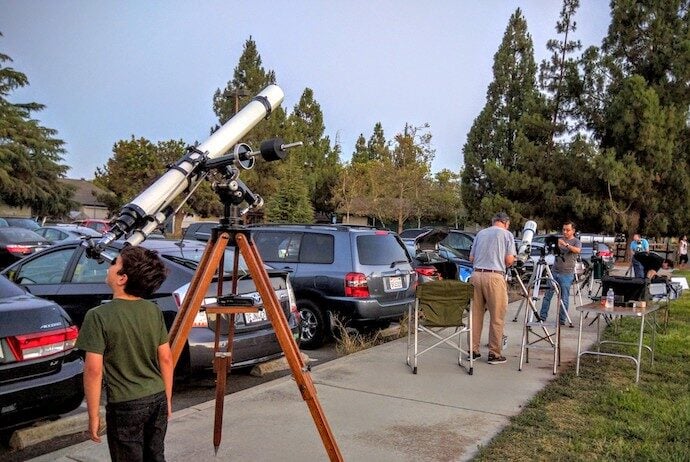Recently, our 6th-grade team embarked on a journey where we didn’t make it very far. To be fair, we didn’t intend to go anywhere but the 6th-grade wing of our building. Our journey was more like a scrimmage of the mind and was an eye-opening experience for students and educators alike.
For the past few years, our team has replaced our final exam week with an interdisciplinary Project-based unit on space exploration. One way I’ve heard it described is that, unlike normal classroom content which is a mile long and one inch deep, Project-based Learning (PBL) is one inch long and a mile deep. Immersive education of this sort aims to cover less content but delves into all angles of a subject. While these types of units can be tricky to plan, they also can produce some authentic and meaningful learning opportunities for students.
For our end-of-year unit, we developed a narrative where NASA was soliciting proposals for a Mars mission. Students had to develop a three-phased proposal for creating a settlement on Mars considering many factors like payloads, launch windows, and laws for the colony.
Students’ initial attitudes were very relaxed. Humans were on the moon almost 50 years ago; Mars can’t be that much more difficult, right? Well, students quickly found out that although a mission to Mars has some similarities to the moon, it is very different.
Using the great Kurzgesagt video, Building a Marsbase is a Horrible Idea, teachers introduced students to Mars’ dust storms, radiation, and frigid temperatures. We also took a field trip to our local Science Center to see an exhibit on Mars and take notes. The interactive displays on everything from food production to spacesuit technology were a great context for the overall project. We also contacted CMU, our local technical university, and had a speaker visit who works on developing nanosatellites that could one day be deployed on Mars.
By the end of the week, students had researched the hurdles, devised solutions to these problems, built dioramas of their Mars base, drafted a series of laws, and developed a proposal for obtaining water, oxygen, and fertile soil. They gave presentations in front of the entire school for their proposals and a winning proposal was chosen by teachers and administrators.
Overall, it was a successful week, but it wasn’t always smooth sailing. As I find with many interdisciplinary projects, the teachers learned just as much as the students. Sometimes well-planned modules really don’t make a strong impact, while other more off-the-cuff activities produce some fascinating results. Other times, instructions weren’t as detailed as they could be which left room for some groups to stray from their objective and get distracted.
While it can be a challenge to plan this kind of unit, there are a few ways to increase the chances of a fruitful project. First, it really helps to make PBL as different from regular school as possible. Changing up the schedule, taking field trips, and inviting speakers to come to the school can make learning more immediate for students.
Incorporating workshop time where students are given the agency to create in a new environment also has produced some great results. It can be hard to let students work independently, but I’ve found they can really surprise you when you give them a challenge and the space to work on it.
It also helps to have a strong real-world narrative component to the project. For the whole week, you are creating a tiny world or alternate reality for students. Small things like handing out roles, dressing the part, and holding morning stand-up meetings in character can help to break out of normal school mode. In a way, PBL mimics the model of work in most technology companies where challenges are posted, deadlines are set, and natural consequences work as the primary motivator. Similarly, wrapping up the unit with a presentation or showcase in front of an audience can be quite a motivator for students.
Immersive education, despite its difficulties, can be a great way to capstone a term or a unit. It gives the students the opportunity for application and creation in a unique atmosphere outside the normal school mindset. It also puts the ball in the students’ court and gives them the space to create something meaningful, which really is the ultimate goal.
Learn More
Project-based Learning (PBL)
https://www.powerschool.com/blog/project-based-learning-benefits-examples-and-resources/
What is Project-based Learning
https://www.pblworks.org/what-is-pbl
Project-based Learning Teaching Guide
https://www.bu.edu/ctl/guides/project-based-learning/
How to Create a Project-based Learning Lesson
https://www.cultofpedagogy.com/project-based-learning-lesson/
Seven Essentials for Project-based Learning
https://www.ascd.org/el/articles/seven-essentials-for-project-based-learning

